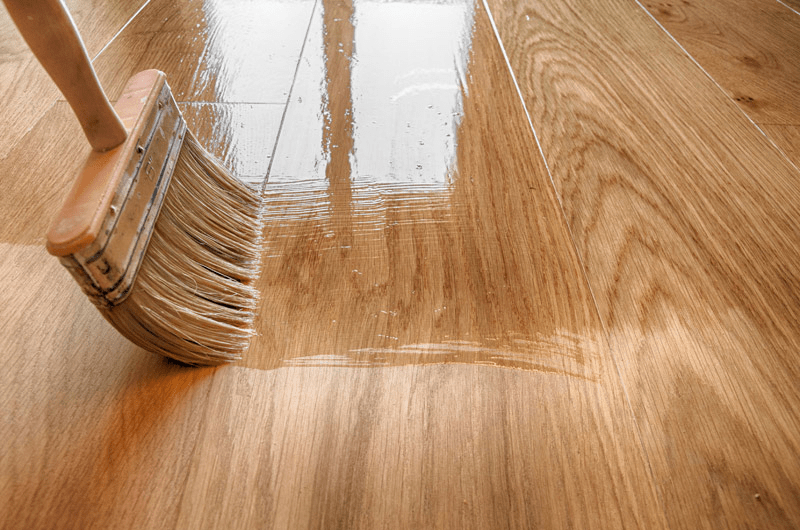Wood finishing is applying a finish to protect and enhance the beauty of wood. It prevents swelling, cracking, and fading and helps furniture and other wooden items stand the test of time.

Many professional wood finishing techniques include waxes, oils, lacquers, shellacs, and varnishes. Each one offers a different degree of protection, durability, and repairability.
Preparation
Preparation is an important step in finishing wood, ensuring a quality finish. This process includes sanding, cleaning, and applying a coat of shellac or stain. It can also include applying a final coat of varnish.
The choice of the correct finishing product depends on some factors, including what type of wood you are working with and how it will be used. Moreover, it would help if you considered your project’s environmental impact and any potential hazards that may occur.
For instance, if you use water-based paint on the wood, you should remove all dust from the surface before applying it. This will help the paint adhere evenly to the wood’s surface, reducing any problems that may arise later on.
Another important factor is ensuring the proper temperature and humidity when applying a wood finish. Low temperatures and high humidity slow evaporation, making the finish take longer to dry and cure.
To avoid this problem, apply a coat of thinned shellac to the wood before applying any dye or stain. This will significantly increase the odds of getting an even coating of color that won’t show blotches or lap marks.
Staining
Staining wood is important to ensure that the finished product looks good and lasts a long time. It protects the wood from moisture and adds color to it, often adding a sheen that isn’t there when the wood is left raw.
It also accentuates the wood’s natural beauty and grain, which can add a touch of warmth to a project. Depending on the type of stain you use, it can make the grain look vibrant or more subtle.
The best way to choose a stain is to decide on the look you want to achieve. It’s also important to consider the condition of the surface you plan to stain. A transparent or semi-transparent stain can accentuate the grain, while an opaque stain might obscure it.
Another consideration is the type of finish you will apply over the stain. You can opt for a clear coat, adding a shiny sheen and protecting the wood from water and chemicals.
You’ll want to apply the finishing coat before you begin to stain, as this will give it a chance to bond with the stain. You can also apply the finish after the stain has dried (usually overnight). It’s best to sand the surface of the wood before applying the finish, as this will help it stick better.
Polishing
Polishing wood improves the furniture’s appearance by hiding minor scratches and adding a new sheen. It also enhances its durability by helping to prevent future nicks and scratches.
Before applying polish, it is important to clean the wood thoroughly and remove all traces of dirt or grime. This will help the polish adhere to the surface better.
If the wood has been stained, it is advisable to sand it to remove any stains before applying polish. Once the sanding is complete, wipe off all dust with a clean rag.
A good wood finish should showcase the natural beauty of the wood’s grain, color, and figure patterns and protect the wood from harsh conditions like heat, water, and solvents. The finish should also be durable and easy to apply.
Oil-based varnishes are the most durable finishes available, and they are easy to apply by hand. They are made of tough synthetic resins modified with drying oils such as tung and linseed.
Boiled linseed oil is another common finish that is available in several forms. It is usually sold in a liquid form and is applied by spreading it with a soft cloth on the surface part by part. Once it has dried, a coat of polish should be applied to the surface.
Varnishing
Varnishing is a process that protects wooden surfaces from grease, dust, dirt, and other contaminants. It also helps to prevent staining and makes the wood easier to clean.
Varnishes are transparent liquids that provide a protective coating in much the same way as paint. They do not alter the original surface but add a lustrous, glossy finish.
Traditionally, varnishes are made from a combination of a drying oil, a resin, and a thinner or solvent, plus a metal drier to accelerate the drying. They are used to coat unpainted furniture, other woodwork, and various decorative objects.
Many different types of resins are used in the production of varnishes. These include amber, kauri gum, dammar, copal, rosin (pine resin), sandalwood, balsam, elemi, and mastic.
The type of resin you use may influence the finished result. For example, varnishes made from kauri gum are often used to preserve a wood’s natural color and grain.
When applying varnish, it is important to have a clean workspace that is well-lit and ventilated. Some varnishes and thinners contain strong fumes that can make you lightheaded or nauseous if you don’t have proper ventilation.
Applying two or more varnish coats can help create a smooth, even finish. However, it would help if you always allowed the first coat to dry or harden before applying a second one.



